Meta Description Not Showing In Google
In the realm of search engine optimization (SEO), a meta description plays a crucial role in driving organic traffic to your website. However, many website owners have encountered the frustrating issue of their meta descriptions not showing in Google search results. In this article, we will explore the reasons behind this, the impact it can have on your SEO efforts, and the steps you can take to address the problem.
Why is Meta Description Important for SEO?
The meta description is an HTML attribute that provides a concise summary of the content on a web page. It serves as a snippet or preview of the page’s content that users see in search engine results. A well-crafted meta description holds several benefits for your website’s SEO:
1. Increased Click-through Rates (CTR): A compelling and relevant meta description can attract users’ attention and entice them to click on your website. By optimizing your meta description with keywords and a clear call-to-action, you can improve your click-through rates and drive more traffic to your site.
2. Influence on Search Engine Ranking: Although meta descriptions do not have a direct impact on search engine ranking, they indirectly affect it by influencing user behavior. When users find your meta description attractive and relevant, they are more likely to click on your website’s link, signaling to search engines that your page provides valuable content. This user engagement can improve your ranking in search results over time.
Common Reasons for Meta Description Not Showing on Google:
1. Google’s Dynamic Generation of Meta Descriptions: Google may dynamically generate meta descriptions for search results using relevant content from your page. This means that even if you have specified a meta description, Google may choose to display its own snippet instead.
2. Potential Issues with the Meta Description Tag Implementation: If your meta description is not showing in Google, it is essential to ensure that the meta description tag is properly implemented on your web pages. Common issues include missing or incorrect tags, or conflicts with other HTML elements.
3. Google’s Algorithmic Selection of Snippets Instead of Meta Descriptions: In some cases, Google’s algorithms may choose to display snippets from your website’s content that it considers more relevant to a user’s search query. This can result in the meta description not being shown, even if it has been properly implemented.
How to Address Meta Description Not Showing on Google:
1. Ensuring the Meta Description Tag is Properly Implemented: Review your website’s HTML code and make sure that each page has a unique and properly formatted meta description tag. It should be concise, around 150-160 characters in length, and accurately summarize the content of the page.
2. Optimizing Meta Descriptions for Length and Relevance: Keep your meta descriptions within the recommended length limits to prevent truncation in search results. Also, make sure they accurately reflect the content of the page and include relevant keywords to attract user attention.
3. Incorporating Target Keywords in Meta Descriptions: Including target keywords in your meta descriptions can help search engines understand the relevance of your page and improve its visibility in search results. However, avoid keyword stuffing and ensure that the description reads naturally and appealingly to users.
4. Utilizing Schema Markup to Enhance Meta Description Visibility: Schema markup provides structured data that can enhance the display of your website’s information in search results. By utilizing schema markup, you can potentially influence Google’s selection of snippets, ensuring that your meta descriptions are displayed as intended.
Other Factors Affecting Meta Description Visibility on Google:
1. Google’s Preference for Fresh and Regularly Updated Content: Google favors websites that regularly publish fresh and relevant content. Regularly updating your website with new content can increase the likelihood of your meta descriptions being displayed in search results.
2. The Impact of Mobile Devices on Meta Description Display: With the rise of mobile devices, Google often truncates meta descriptions to fit smaller screens. It is crucial to ensure that your meta descriptions are concise and engaging, even when displayed on mobile devices.
3. Google’s Reliance on Featured Snippets and Rich Results: Google frequently displays featured snippets and rich results, such as images, videos, and answer boxes, which can impact the visibility of meta descriptions. Optimizing your content for these formats can increase the chances of your website being featured prominently in search results.
4. How User Behavior and Engagement Metrics Can Affect Meta Description Appearance: Google takes into account user behavior and engagement metrics, such as click-through rates and bounce rates, when selecting snippets to display. Providing high-quality content and a compelling meta description can encourage users to click on your website, increasing the chances of your meta description being shown.
FAQs:
1. Why is my Yoast meta description not showing in Google?
If your Yoast meta description is not showing in Google search results, ensure that you have properly implemented the meta description tag and optimized it for length and relevance. Also, keep in mind that Google may choose to generate its own snippet for your page.
2. How can I change my meta description on Google?
To change your meta description on Google, you need to update the meta description tag in the HTML code of your web page. Make sure to follow the recommended length and optimize it with relevant keywords.
3. Why is my HTML meta description not working?
If your HTML meta description is not working, check that the tag is correctly implemented and that there are no conflicts with other HTML elements. Ensure that the tag has the correct syntax and is present on every relevant web page.
4. How can I add a meta description in Google Sites?
Unfortunately, Google Sites does not provide a direct option to add meta descriptions. However, by optimizing your page content and ensuring that headers and other on-page elements accurately reflect the content, you can influence the snippets displayed by search engines.
5. How can I use Google Search Console to improve meta description visibility?
Google Search Console provides valuable insights into your website’s performance, including the appearance of your meta descriptions in search results. Regularly monitor the Search Console data, and ensure that your pages’ meta descriptions are accurately represented and appealing to users.
In conclusion, a well-crafted meta description plays a significant role in SEO, improving click-through rates and indirectly influencing search engine ranking. By addressing common issues and optimizing meta descriptions for length, relevance, and keywords, you can enhance their visibility on Google. Additionally, understanding the impact of other factors such as fresh content, mobile devices, and user behavior metrics can further strengthen your meta description strategy and maximize the organic traffic to your website.
Why Does Google Show A Different Title/Meta Description In The Serps? Rank Math Seo
Why Is My Meta Title Not Showing?
When it comes to optimizing your website for search engines, one of the essential elements to consider is the meta title. The meta title is an HTML element that specifies the title of a web page and appears as the clickable headline in search engine results. However, there may be instances when your meta title is not showing up as expected. In this article, we will delve into the reasons behind this issue and provide you with some solutions to ensure your meta title displays correctly.
1. Improper meta title tag implementation:
One common reason for your meta title not showing is an incorrect implementation of the meta title tag. The meta title tag should be placed between the
2. Search engine limitations:
Search engines have specific guidelines and limitations on the length and structure of meta titles. If your meta title is too long or doesn’t comply with these guidelines, it may be truncated or not displayed at all. To prevent this, make sure your meta title is concise, relevant, and within the recommended character limit (usually around 50-60 characters).
3. Duplicate or empty meta title tags:
Having multiple pages with identical meta title tags can confuse search engines and impact your ranking. Ensure that each page has a unique meta title that accurately reflects its content. On the other hand, leaving the meta title tag empty can also result in it not showing up in search results. Make sure every page on your website has a proper meta title tag.
4. Rich snippets and structured data:
Sometimes, search engines display additional information in the search results, such as extra text, ratings, or images. This enhanced display is known as a rich snippet. In such cases, your chosen meta title may be replaced by the dynamically generated title from the rich snippet, resulting in your meta title not being shown. Although you cannot have complete control over this, you can use structured data markup on your webpages to provide search engines with more accurate information.
5. Google algorithm changes:
Google frequently makes updates to its search algorithm, which can impact how titles are displayed in search results. It’s important to stay up-to-date with these changes to adapt and optimize your meta titles accordingly. Keep an eye on Google’s official announcements, webmaster forums, and reputable SEO blogs to stay informed.
6. Localized search results:
In some cases, search engines may display locally relevant results to users based on their location. This localization can influence the meta titles shown in search results. If your website targets specific regions or countries, you may want to consider implementing localized meta titles to ensure better visibility for local users.
Frequently Asked Questions (FAQs):
Q1: Are meta titles still relevant for SEO?
A1: Yes, meta titles are still crucial for SEO. They contribute to how search engines understand and rank your web page. A well-optimized meta title can improve your chances of attracting relevant organic traffic.
Q2: How do I check if my meta title is displayed correctly?
A2: You can simulate how your meta title appears in search results by using online SEO tools or by performing a search on search engines. Alternatively, you can check the HTML code of your web page to ensure that the meta title tag is implemented correctly.
Q3: Can I use special characters or symbols in my meta title?
A3: While most special characters and symbols can be used in meta titles, it’s recommended to stick to alphanumeric characters and basic punctuation for the best compatibility across different browsers and devices.
Q4: How often should I update my meta titles?
A4: It’s a good practice to review and update your meta titles regularly, especially if you make significant changes to your web page content or targeting strategy. Keeping your meta titles up-to-date can help improve your click-through rates and overall SEO performance.
In conclusion, if your meta title is not showing up as expected, it’s crucial to check the implementation of meta title tags, make sure they comply with search engine guidelines, and avoid duplicate or empty tags. Additionally, staying aware of algorithm changes, utilizing structured data markup, and considering localized search results can help you optimize your meta titles for maximum visibility and better SEO performance. Remember, the meta title is your first chance to attract users to your website, so it’s worth investing time and effort to ensure it appears correctly in search engine results.
Why The Meta Description Is Not Showing On The Serp?
In the world of search engine optimization (SEO), meta descriptions play a crucial role in attracting users to click on your website in search engine result pages (SERPs). A well-crafted meta description provides a concise summary of what the webpage is about and entices users to visit your site. However, there are instances when the meta description doesn’t show up on the SERP, leaving webmasters perplexed and questioning the effectiveness of their SEO efforts. In this article, we will explore the reasons why the meta description might not be displaying on the SERP and provide insights on how to rectify the issue.
1. Google Algorithm Ignoring the Meta Description
The most common reason for a missing meta description on the SERP is that search engines, particularly Google, have chosen to ignore it. Search engines aim to deliver the most relevant and helpful results to users, and at times, they might extract content from the webpage that they believe better aligns with the user’s search intent. Instead of relying solely on the meta description, search engines use other textual content from the page such as headings or snippets to generate a relevant snippet for the SERP. While this may increase the visibility of certain keywords, it can sometimes obscure the carefully crafted meta description.
2. Keywords Not Matching the Search Query
Another reason why the meta description may not appear on the SERP is when the keywords in the search query do not precisely match the keywords in the meta description. Search engines aim to deliver accurate results and may choose to display a relevant snippet from the content that more closely matches the query. To ensure your meta description appears, consider incorporating the exact or closely related keywords from your target queries within the meta description.
3. Meta Description Too Long or Irrelevant
Search engines typically display meta descriptions up to a certain length limit, usually around 160 characters. If your meta description exceeds this limit, the search engine may decide to truncate it, resulting in incomplete or unclear information being displayed on the SERP. Be sure to keep your meta description concise, relevant, and within the recommended character limit.
Furthermore, it is essential to ensure that the meta description accurately reflects the content of the webpage. Misleading or irrelevant meta descriptions can undermine user trust and result in a poor user experience, prompting search engines to favor other content from the page.
4. Dynamic SERP Content
In some cases, the meta description may not show up due to dynamic SERP features. Google often includes additional features like knowledge graphs, rich snippets, or featured snippets directly on the SERP, prioritizing them over the meta description. While these features can enhance the visibility of your website, they can also overshadow the meta description.
5. Website Technical Issues
Problems with website code or markup can cause search engines to disregard the meta description. Ensure that your meta description is correctly placed within the HTML code and that there are no issues with any associated tags or elements. Test your webpage using tools like Google’s Structured Data Testing Tool or Search Console’s HTML Improvements report to identify and resolve any technical issues affecting the visibility of your meta description.
FAQs:
Q: Why is a well-crafted meta description important?
A: A well-crafted meta description attracts users to click on your website in the SERP, improving your click-through rate (CTR) and increasing organic traffic.
Q: Are meta descriptions considered a ranking factor by search engines?
A: While meta descriptions are not a direct ranking factor, their impact on CTR can indirectly influence rankings. Higher CTR suggests to search engines that your content is relevant and valuable to users.
Q: Can I force search engines to display my meta description?
A: Unfortunately, search engines have the discretion to choose whether to display your meta description. However, optimizing your meta description and ensuring it accurately reflects your content will increase the likelihood of it being displayed.
Q: How often should I update my meta descriptions?
A: It is recommended to regularly review and update your meta descriptions in line with changes in your content or user search behavior.
Q: Does the absence of meta descriptions impact SEO negatively?
A: While the absence of meta descriptions may not directly impact SEO, it can decrease click-through rates and user engagement, indirectly affecting your website’s visibility and rankings.
In conclusion, the meta description can be a valuable tool in attracting users to your website in the SERPs. While there may be instances when the meta description does not appear as intended, understanding the reasons behind it and optimizing your meta description accordingly can help improve your website’s visibility and click-through rates, ultimately benefiting your SEO efforts.
Keywords searched by users: meta description not showing in google yoast meta description not showing in google, Meta description not showing, how to change meta description on google, HTML meta description not working, meta tag not working, how to add meta description in google sites, google search console, Meta title google
Categories: Top 73 Meta Description Not Showing In Google
See more here: nhanvietluanvan.com
Yoast Meta Description Not Showing In Google
In the realm of search engine optimization (SEO), meta descriptions play a significant role in driving traffic to a website. They provide concise summaries of webpage content, helping search engines and users understand the relevance of a webpage. One popular tool that aids in optimizing meta descriptions is Yoast, a WordPress plugin known for its SEO features. However, some users have reported encountering an issue where their Yoast meta descriptions are not appearing in Google search results. In this article, we will delve into the potential causes of this problem and explore possible solutions.
Possible Causes of Yoast Meta Description Not Showing in Google:
1. Google’s Algorithm Overrides: Google’s algorithms have the ability to override meta descriptions if they find the content on the page more relevant or useful to the user’s search query. In such cases, Google may generate its own meta description, leading to the exclusion of the Yoast-generated description.
2. Content-Length Limitations: Google has a character limit for meta descriptions and if your Yoast-generated description exceeds that limit, Google might truncate or replace it. It is crucial to ensure that your meta description stays within the character limit to avoid any potential truncation.
3. Duplicate or Irrelevant Meta Descriptions: Google may choose to omit Yoast meta descriptions if it considers them to be duplicate or irrelevant to the webpage’s content. It is essential to craft unique and relevant meta descriptions for each webpage to increase the chances of them appearing in search results.
4. Incorrectly Configured Yoast Settings: A misconfiguration of the Yoast SEO plugin could prevent meta descriptions from showing up in Google search results. It is important to review your Yoast settings and ensure they are correctly configured, enabling the plugin to generate and display meta descriptions.
Solutions to the Yoast Meta Description Not Showing Issue:
1. Optimize Content Relevance: To increase the likelihood of your Yoast meta descriptions appearing in search results, ensure that they accurately reflect the content on the webpage. This increases the chances of Google considering them relevant to user queries.
2. Check Character Limit: Keep your meta descriptions concise, within Google’s recommended character limit of around 160 characters. Yoast provides a character counter to help you stay within these limits and avoid truncation.
3. Craft Unique Meta Descriptions: Each webpage on your website should have a unique meta description that accurately summarizes its content. Avoid duplicating meta descriptions across multiple pages, as Google may choose to ignore them.
4. Ensure Yoast Plugin is Up to Date: Outdated versions of the Yoast plugin may have compatibility issues, resulting in meta descriptions not displaying correctly. Regularly update your Yoast SEO plugin to the latest version to avoid any potential compatibility issues.
5. Review Yoast Settings: Double-check your Yoast SEO plugin settings to ensure they are configured properly. Verify that the “Meta description template” field is not empty and that the “Force rewrite titles” option is enabled. These settings are crucial for generating and displaying meta descriptions correctly.
6. Utilize Structured Data: Implementing structured data markup, such as schema.org, can provide additional context and information about your webpage’s content to search engines. Although this might not directly fix the Yoast meta description issue, it can enhance Google’s understanding of your content, potentially improving its search visibility.
Frequently Asked Questions (FAQs):
Q1: Can I rely solely on Yoast for meta description optimization?
A1: While Yoast is a powerful tool for SEO, it cannot control how Google chooses to display meta descriptions. It is essential to follow best practices, create unique and relevant meta descriptions, and ensure that your website’s content aligns with the descriptions.
Q2: Does the order of the meta description matter?
A2: Google typically generates snippets by combining various elements from your webpage, including the meta description. However, the order of the meta description does not directly impact its visibility, as Google algorithms dynamically select the most appropriate parts.
Q3: Can I use the same meta description for multiple pages?
A3: It is recommended to craft unique meta descriptions for each webpage to enhance search engine visibility. Using the same meta description across multiple pages does not provide a clear indication of the content, potentially leading to confusion for both search engines and users.
Q4: How long does it take for changes to meta descriptions to reflect in Google search results?
A4: Google’s indexing can take time, so changes to meta descriptions may not be immediately reflected in search results. It is important to be patient and allow sufficient time for Google to crawl and index your webpages.
Q5: Are meta descriptions still important for SEO?
A5: Yes, meta descriptions remain essential for SEO. While they may not directly impact search rankings, they significantly influence click-through rates and user engagement. Crafting compelling meta descriptions improves the chances of attracting relevant traffic to your website.
In conclusion, the Yoast meta description not showing issue in Google search results can arise due to various causes, including Google’s algorithms, content-length limitations, duplicates, and incorrectly configured Yoast settings. By optimizing content relevance, adhering to character limits, crafting unique descriptions, and reviewing Yoast settings, you can increase the likelihood of your meta descriptions appearing in search results. Remember to follow best practices, regularly update your Yoast plugin, and utilize structured data to enhance your website’s overall search visibility.
Meta Description Not Showing
When it comes to search engine optimization (SEO), meta descriptions play a crucial role in attracting organic traffic to your website. However, sometimes website owners and SEO enthusiasts face a frustrating situation where the meta description they carefully crafted doesn’t show up in the search engine results pages (SERPs). In this article, we will explore the reasons behind meta descriptions not showing and provide practical solutions to fix this issue.
Why is your meta description not showing?
1. Search Engine Algorithm:
Search engines, like Google, don’t always display the meta description you provide. They may choose to display a more relevant snippet from your webpage’s content that best matches the user’s search query. The algorithm behind this selection process analyzes various factors, including keyword relevance and user intent.
2. Duplicate Meta Descriptions:
If your website has several pages with the same or similar meta descriptions, search engines may opt to ignore them and choose alternative snippets. Duplicate meta descriptions can lead to a lack of variety in SERPs and reduce click-through rates to your website.
3. Over-Optimized or Irrelevant Meta Descriptions:
If your meta descriptions are excessively stuffed with keywords or do not appropriately reflect the content of the page, search engines might decide to replace them with more contextually relevant snippets. It is essential to strike a balance between incorporating relevant keywords and providing an accurate description of the webpage’s content.
4. Missing Meta Descriptions:
If you have not provided any meta description for a specific webpage, search engines will often generate one using on-page content. While this can be a good fallback, it may not always convey the message you intend, resulting in less click-throughs.
How to fix the issue:
1. Craft Compelling Meta Descriptions:
To increase the likelihood of search engines using your meta description, write compelling and concise descriptions that accurately reflect the content of the page. Include relevant keywords and a clear call-to-action to entice users to click.
2. Avoid Keyword Stuffing:
Ensure your meta descriptions are not crammed with keywords. While incorporating relevant keywords is important for SEO, overusing them can lead to penalties and make your meta descriptions appear spammy. Focus on creating useful and readable descriptions that provide value to potential visitors.
3. Unique Meta Descriptions:
Each page on your website should have a unique meta description. Ensuring variety in your meta descriptions helps search engines understand the distinct content of each page, allowing for a better representation of your website in the search results.
4. Utilize Meta Description Length:
Search engines have limitations on meta description length. Google typically displays up to 160 characters, while other search engines may vary. It is important to keep your meta descriptions within these character limits to avoid truncation in the SERPs.
5. Optimize Existing Content:
Review the content on the page that you are currently optimizing for search engines. Ensure that it matches the meta description you have provided and creates reliable context for users. Aligning the content with meta descriptions helps to increase the chances of your preferred description being shown.
FAQs:
Q1: Can I force search engines to display my specified meta description?
A1: Unfortunately, search engines have the final say on whether to display your specified meta description or not. However, optimizing your meta description, using relevant keywords, and providing valuable content can increase the likelihood of it being shown.
Q2: How often should I update my meta descriptions?
A2: It is generally recommended to periodically review and update your meta descriptions to ensure they accurately reflect the page content and align with any changes or updates on your website.
Q3: Do meta descriptions directly impact search engine rankings?
A3: Meta descriptions themselves do not directly affect search engine rankings. However, well-crafted and relevant meta descriptions can improve click-through rates, which indirectly contribute to SEO success.
Q4: Can I use the same meta description for multiple pages without negative consequences?
A4: While using the same meta description for multiple pages may not have a direct penalty, it is best practice to create unique meta descriptions for each page to provide context and avoid confusing search engines and users.
In conclusion, meta descriptions not showing up in the SERPs can be due to search engine algorithms, duplicate or irrelevant descriptions, or missing meta descriptions altogether. By optimizing and crafting compelling meta descriptions, avoiding keyword stuffing, and ensuring uniqueness, you increase the chances of your meta descriptions displaying correctly and attract more organic traffic to your website.
How To Change Meta Description On Google
In today’s digital landscape, having a strong online presence is crucial for businesses and individuals alike. One aspect that plays a vital role in improving your visibility in search engine results is the meta description. The meta description is a concise summary of your webpage’s content that appears below the title and URL on Google’s search results page. It not only helps search engines understand the purpose of your page but also entices users to click on your link. In this article, we will provide you with a comprehensive guide on how to change the meta description on Google, ensuring that you make the most out of this powerful tool.
Understanding the Importance of the Meta Description
Before delving into the process of changing your meta description on Google, it’s important to understand why it matters. The meta description serves as a snippet of information that summarizes what your webpage is all about. It allows users to determine whether your page is relevant to their search query, making it a crucial element in driving organic traffic to your website.
Furthermore, search engines use the meta description to better understand the context of your page. While they don’t directly influence your search ranking, a well-crafted and informative meta description can improve click-through rates, sending positive signals to search engines about the quality of your content.
Steps to Change Meta Description on Google
Now that we’ve established the significance of the meta description, let’s dive into the process of modifying it on Google.
1. Evaluate existing meta descriptions: Start by analyzing your current meta descriptions. Identify pages that lack meta descriptions or have outdated ones that require improvement.
2. Use HTML meta tags: Ensure that your webpages include HTML meta tags. The tag, specifically the “name” attribute with a value of “description,” is used by search engines to display your meta description. Make sure each webpage has a unique, relevant, and engaging meta description.
3. Prioritize page relevance: Your meta description should accurately reflect the content of your webpage. Use relevant keywords that match search queries to increase the chances of attracting interested users.
4. Keep it concise and engaging: Google typically limits meta descriptions to around 160 characters. Craft an engaging description that provides a clear idea of what users can expect when they click on your link. Include a call-to-action to entice users, such as “Learn more,” “Discover now,” or “Get started.”
5. Consider formatting and readability: Emphasize important details with compelling language. Utilize bullet points, numbers, or special characters to make your description stand out. Ensure readability by using proper grammar, punctuation, and correct spelling.
6. Testing and analyzing: After making changes to your meta descriptions, give it some time for search engines to refresh their index. Monitor your website’s organic traffic and specific pages’ performance to assess the impact of your new meta descriptions. Make adjustments as needed to optimize results.
FAQs
Q1. Can I change my meta description without modifying my website’s code?
A1. Yes, it is possible to change your meta description without modifying the website’s code. Many content management systems offer plugins or settings that allow users to edit their meta description without touching the code directly.
Q2. Does the meta description influence SEO ranking?
A2. While the meta description doesn’t directly impact SEO ranking, it plays a significant role in click-through rates. Engaging and relevant meta descriptions can attract more clicks and indirectly contribute to a higher organic ranking.
Q3. How often should I update my meta descriptions?
A3. It is advisable to review and update your meta descriptions periodically, especially for pages with changing or time-sensitive content. Regular updates help ensure that your meta descriptions remain accurate, relevant, and enticing to users.
Q4. Can I reuse the same meta description for multiple pages?
A4. Each webpage should have a unique meta description that accurately reflects its content. Reusing the same meta description across multiple pages may confuse search engines and users, leading to a negative impact on both search rankings and user experience.
Q5. Are there any best practices to follow when writing meta descriptions?
A5. Yes, here are a few best practices:
– Use relevant keywords within the meta description
– Craft compelling, concise, and engaging descriptions
– Highlight unique selling points of your webpage
– Include a clear call-to-action to encourage user interaction
– Maintain the character limit of around 160.
In conclusion, the meta description on Google is a powerful tool that can significantly improve your website’s visibility in search engine results. By following the steps outlined in this comprehensive guide, you can optimize your meta descriptions, attract more clicks, and ultimately enhance your organic traffic. Remember to regularly monitor and update your descriptions to keep them relevant and appealing.
Images related to the topic meta description not showing in google
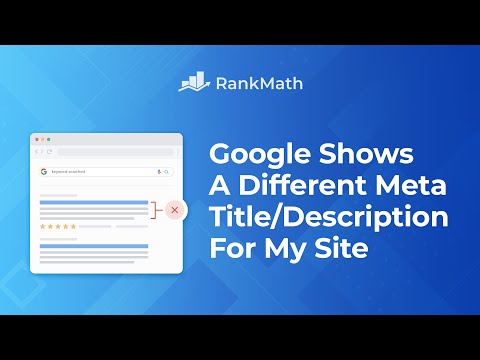
Found 25 images related to meta description not showing in google theme



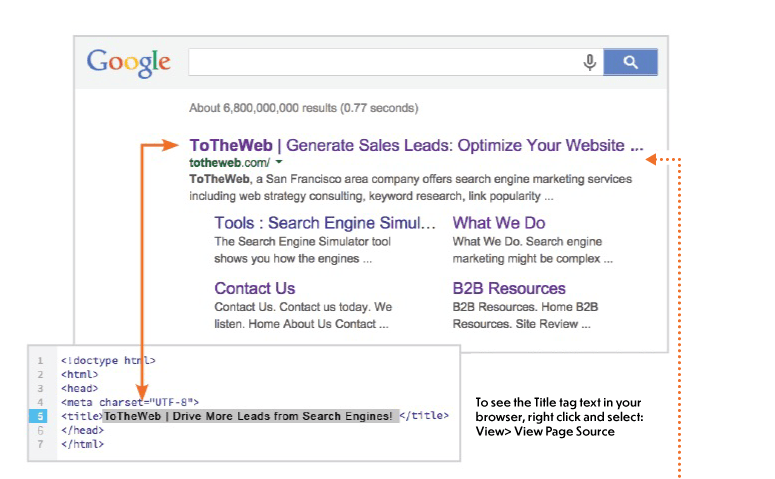

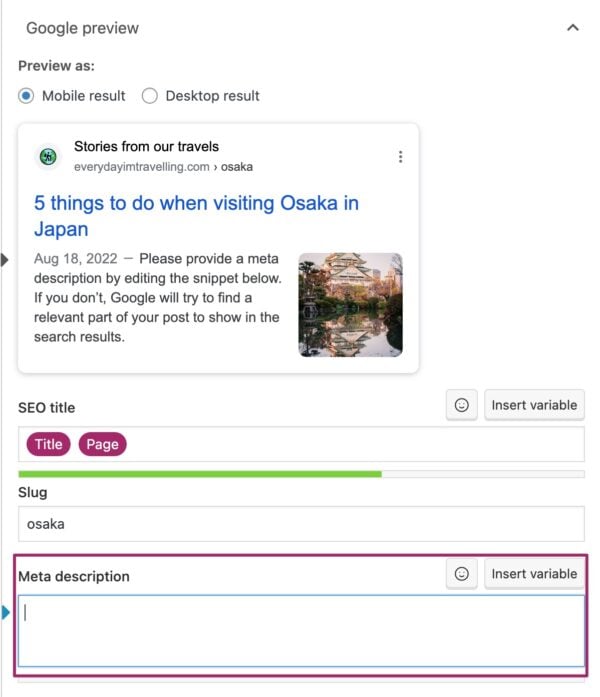

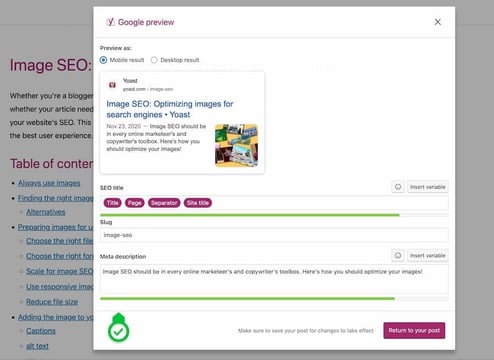
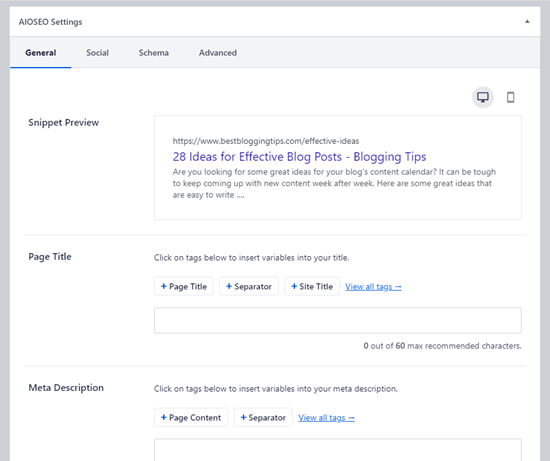

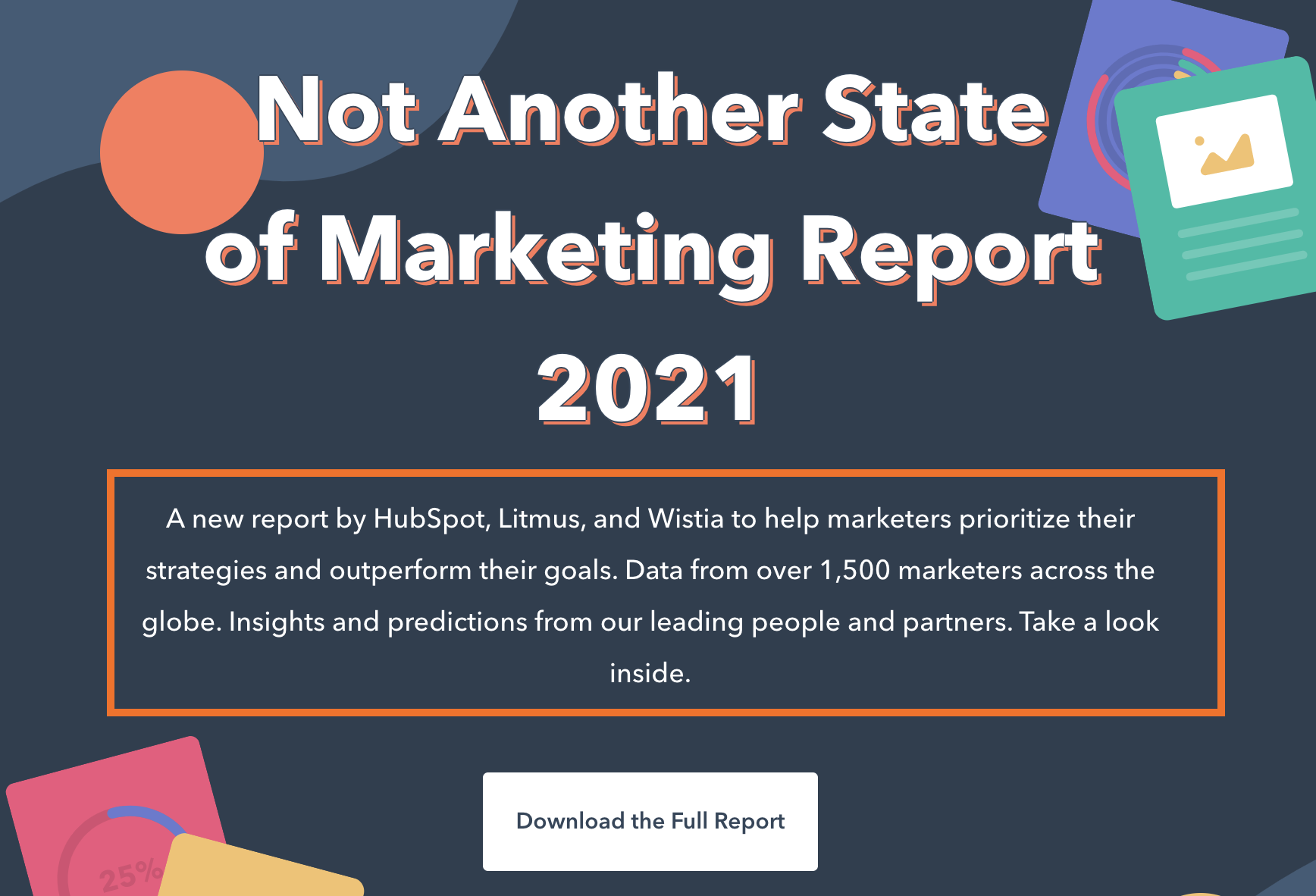



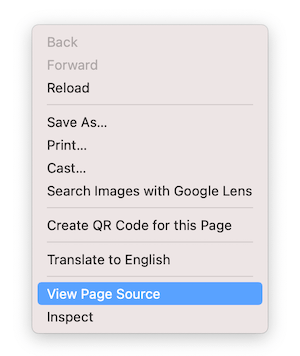

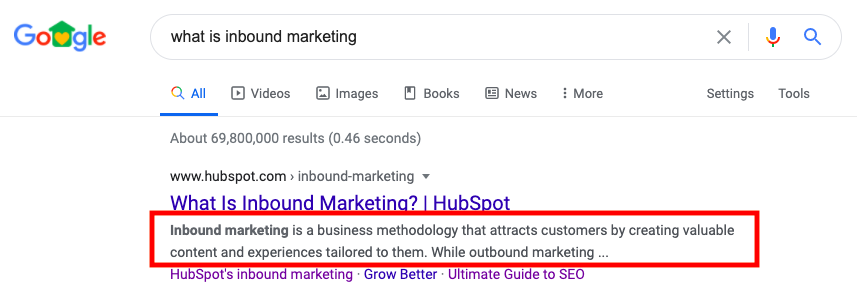
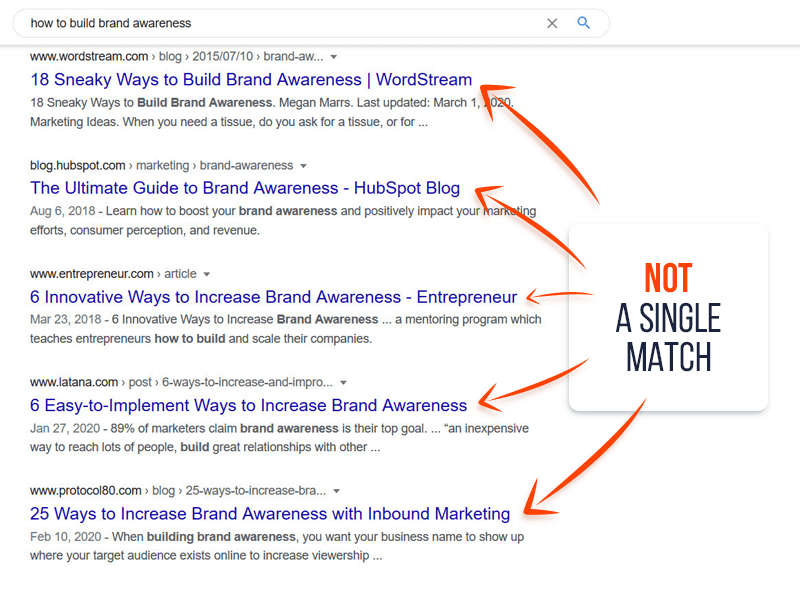
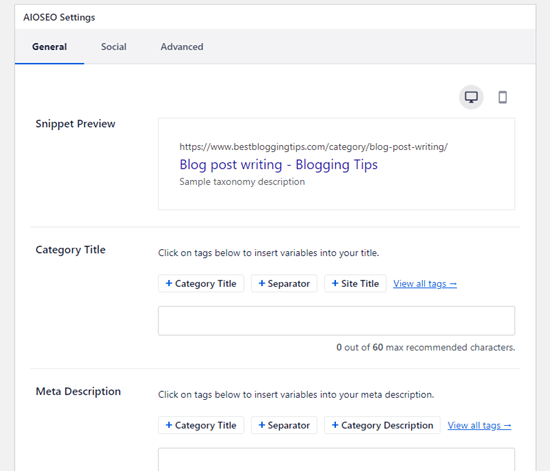


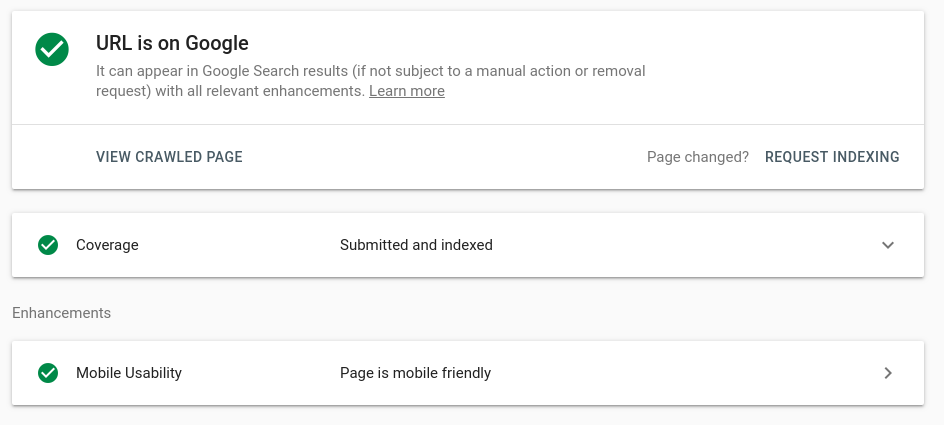


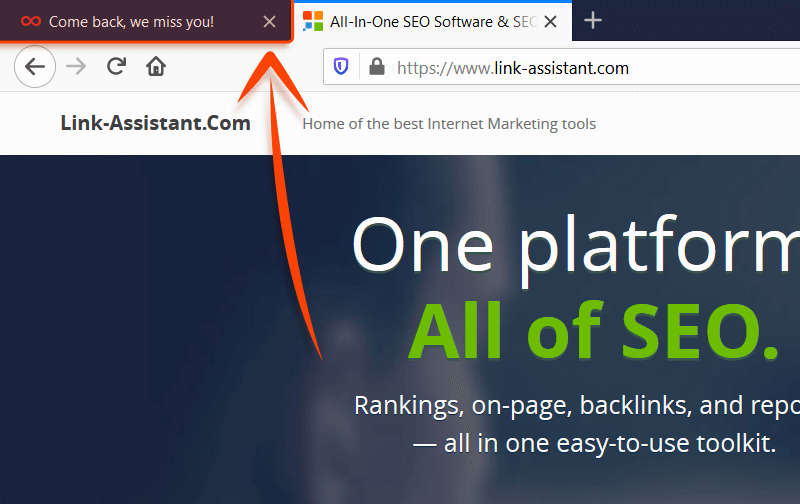

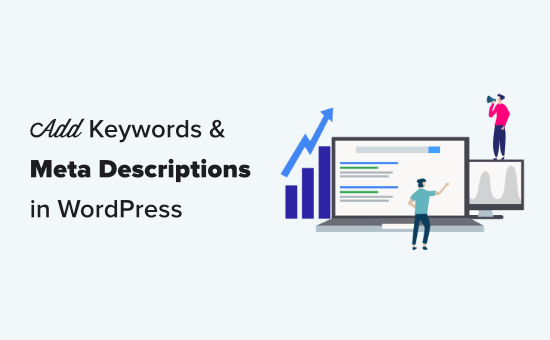

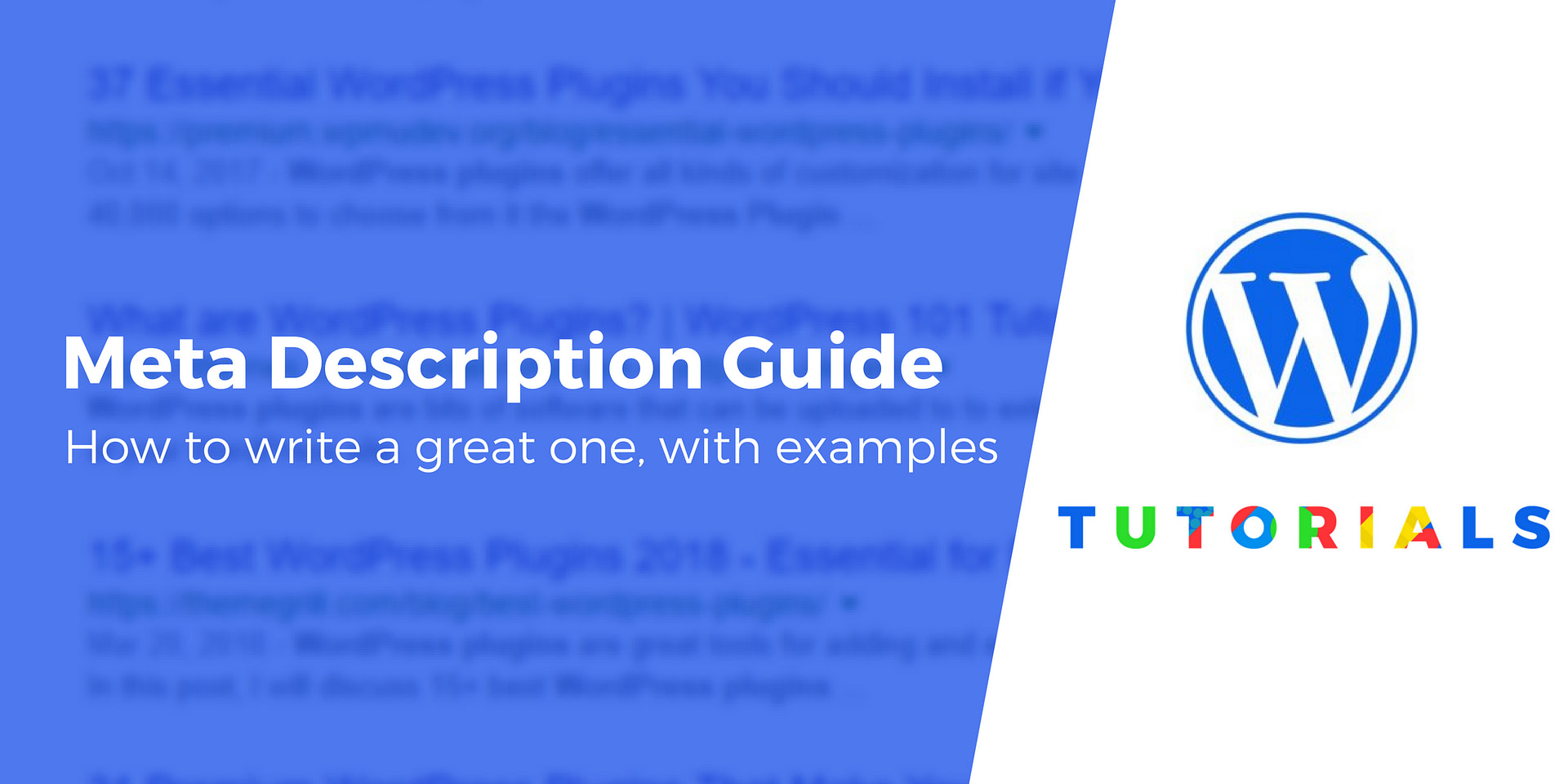




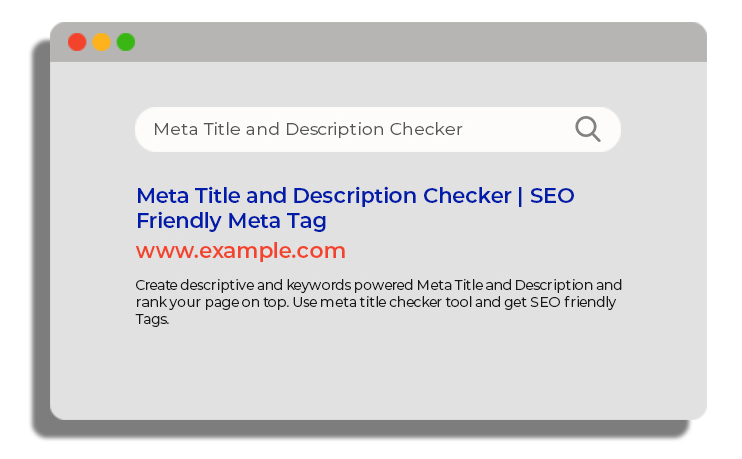

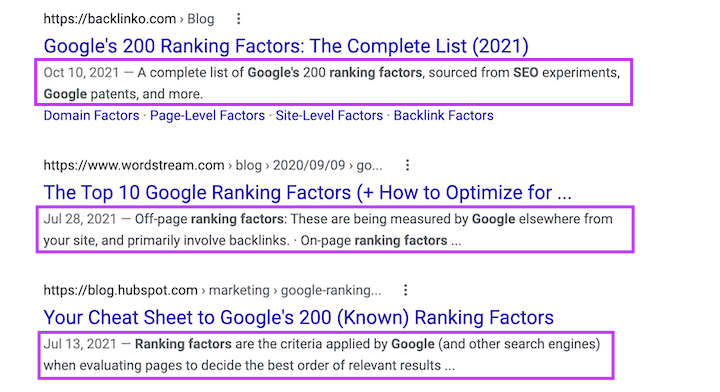


Article link: meta description not showing in google.
Learn more about the topic meta description not showing in google.
- Why Doesn’t Google Use My Title Tag and Meta Description In …
- My SEO title isn’t showing as I have entered it – Yoast
- Website Meta Description not showing in Google search
- How To Write Meta Descriptions: Tips & Examples 2023 – Shopify
- Google shows the wrong meta description for my site – Yoast
- Why meta description tag is not showing on Google
- Meta description not showing in Google search results
- SEO Title and Meta description not showing on Google
- My own meta description is not being displayed in the search …
- Why is Google showing the wrong meta description? – Centori
- Why is Google Not Showing My Meta Description or Title?
- Why is google not showing my title tags/meta description
- Meta Description And Title Not Showing On Google
See more: https://nhanvietluanvan.com/luat-hoc